Root Awakening: Bird’s Nest Snake Plant needs filtered light
Sign up now: Get ST's newsletters delivered to your inbox
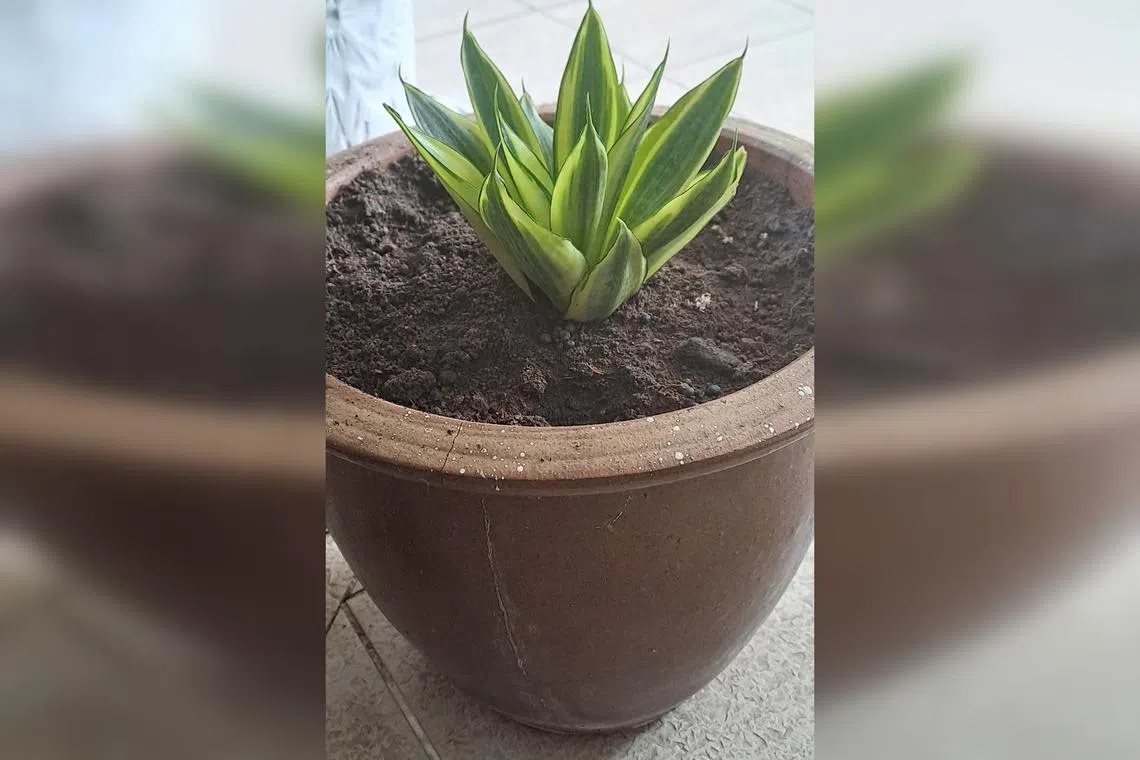
The shade may not be the best place for the Bird Nest Snake Plant.
PHOTO: JASLYN LIM
Wilson Wong
Follow topic:
Bird’s Nest Snake Plant grows slowly
I have had this plant for months. I keep it outdoors in the shade, water it once every two days and fertilise it once a month. Why is it not growing?
Jaslyn Lim
Your plant is commonly known as the Bird’s Nest Snake Plant, so named for its appearance, and it is a slow grower. Its botanical name is Sansevieria trifasciata (Hahnii cultivar).
Shade may not be the best thing for your plant. It needs filtered sunlight for four to six hours a day. Try moving it to a brighter spot for better growth.
Creating a bonsai will take time
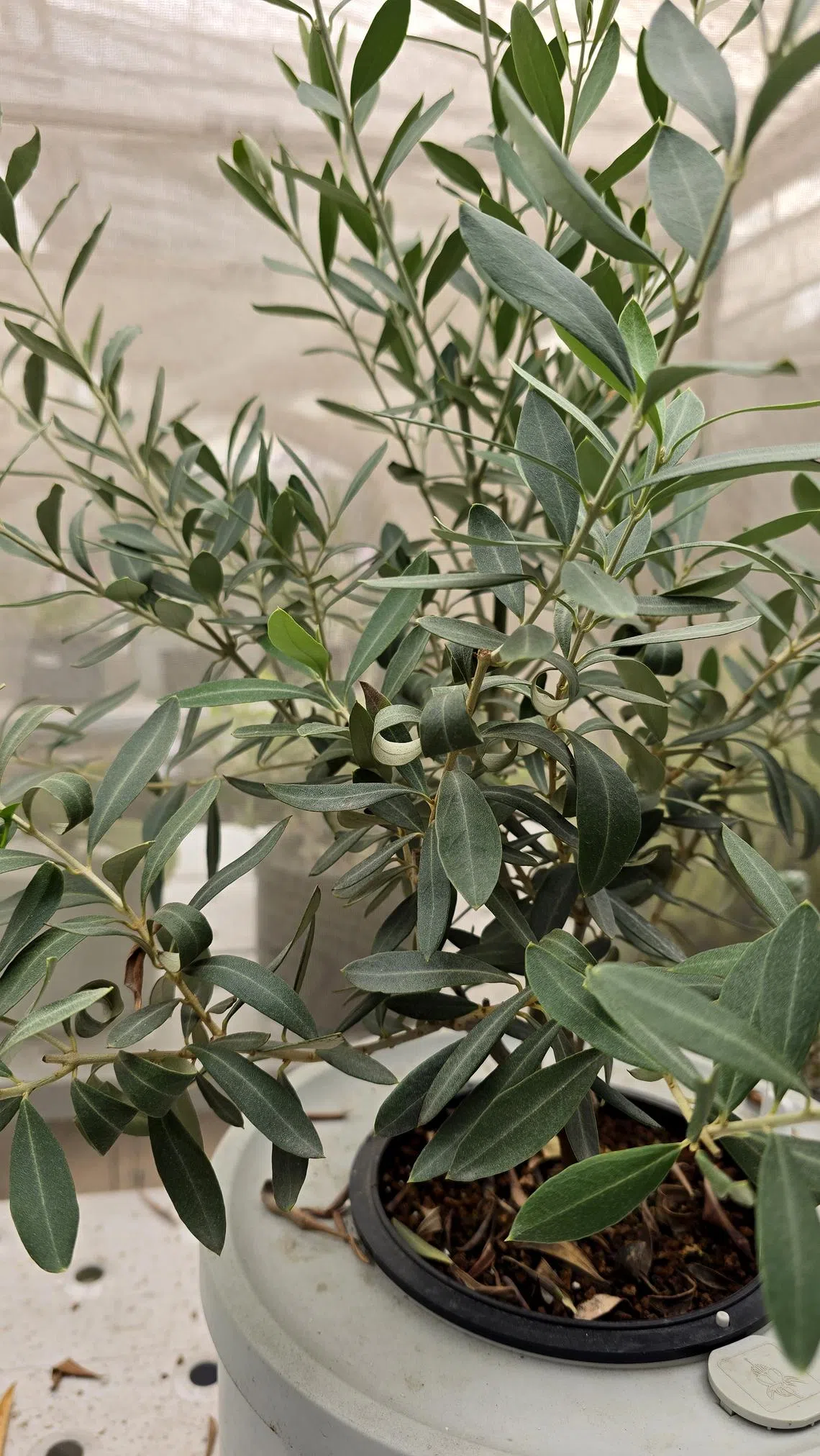
Use wires and prune regularly to shape a plant into a bonsai form.
PHOTO: ADRIAN LING
How can I trim this plant into a bonsai? Also, some of the leaves are curled. Is this a concern? It gets enough water and is kept in well-draining soil.
Adrian Ling
Leaves can curl in response to environmental stress. However, if the leaves are otherwise healthy, this should not be an issue.
Sculpting your plant into a bonsai form will take time. The plant will also need to develop a thick enough trunk.
As your plant grows, you will need to use wires to shape its branches into the desired form. While doing so, you will need to successively prune the long branches to the nodes, bearing in mind where the new growth will appear, as that will determine the branching of the shrub as it grows.
You can refer to books and online resources for more specialised information on the matter.
Mint plant requires good light to grow well
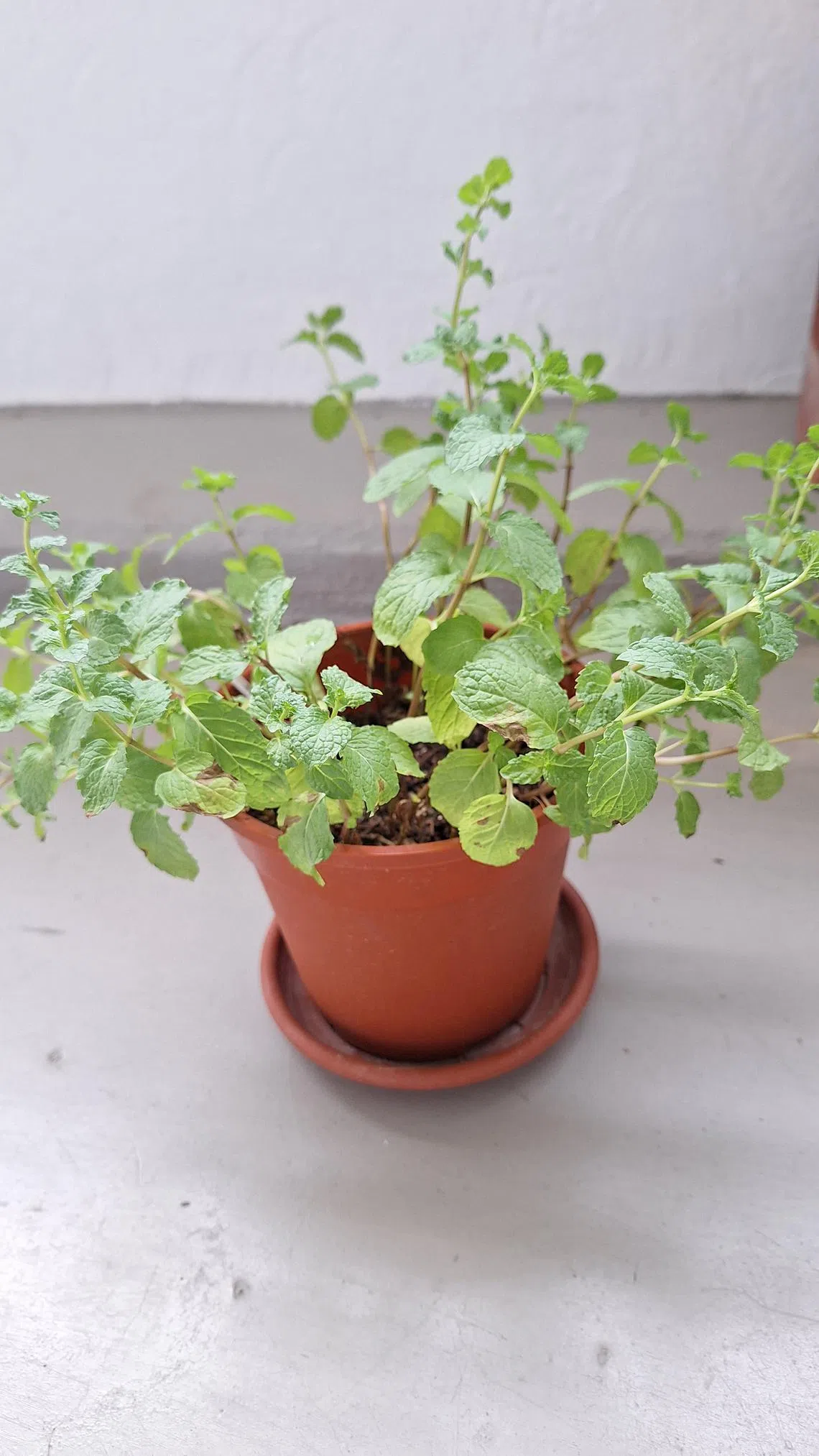
Mint is a thirsty plant and daily watering is often required, but check the moisture level of the soil before watering.
PHOTO: SINDY ANG
There are brown spots on my mint leaves, which seem to be spreading. The stems are also spreading outwards. I water the plant lightly when the soil is dry and it gets indirect sunlight. What is wrong?
Sindy Ang
Mint requires four to six hours of direct sunlight a day to thrive. A lack of light will lead to weak, elongated growth, which will leave the plant vulnerable to pests and diseases.
Mint is a thirsty plant and daily watering is often required, but check the moisture level of the soil before watering.
Over time, its long stems can sprawl, so you will need to prune the plant to keep it tidy and healthy. The plant will occasionally send out long “runner” stems, which can be cut or replanted in the pot to produce new growth.
Mint can develop a massive root system which will fill a pot quickly. You may need to move it to a bigger pot or take stem-cuttings.
Chilli may need hand pollination, Happiness Tree may be reacting to environmental stressors
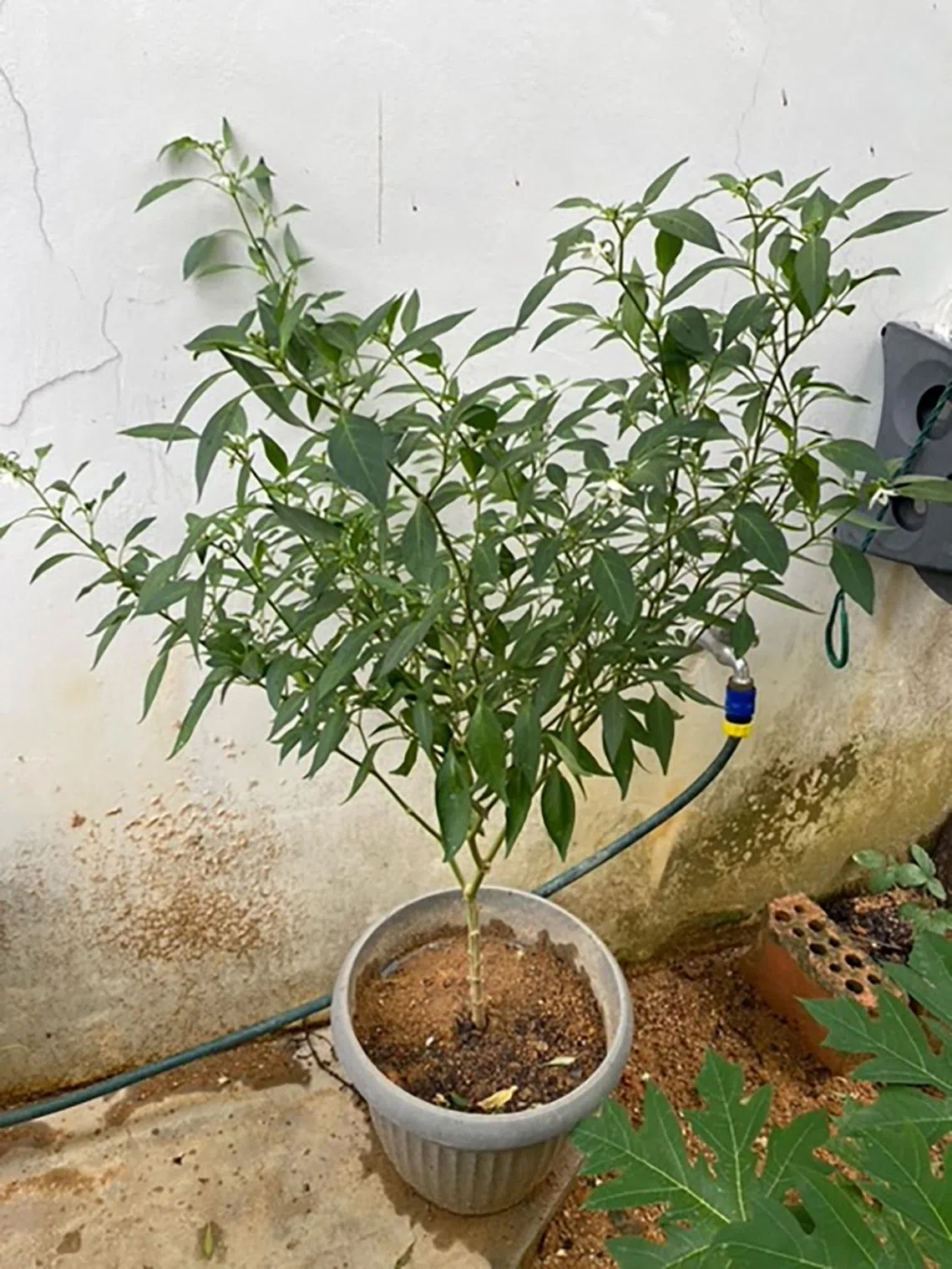
Consider moving this plant to a bigger pot.
PHOTO: TAN MEI LIN
My chilli plant has been flowering for a year, but has not fruited. How can I help it fruit?
Also, my Happiness Tree has yellow specks on its leaves, and some look burnt. What is wrong and can the damage be reversed?
Finally, how can I protect my plant from these insects? I have tried yellow sticky traps, and sprayed sulphur soap solution and neem oil fortnightly. I am not sure what plant this is.
Tan Mei Lin
You may need to perform hand pollination to increase the chances of fruit production in your chilli plant. Also, its pot looks small, which may be causing the plant to dry out and abort flowers prematurely. Give your chilli plant plenty of water and consider moving it to a bigger container.
The cause of the patches and spots on your Happiness Tree can be difficult to determine without more information. The plant may be sunburnt or suffering from a nutrient deficiency, a pest attack or chemical application. However, it is resilient and should recover if given proper care. Keep it in a bright spot and well-draining media, and give it a nutrient-balanced fertiliser.
Your other plant is a Polyscias, which is grown mainly for ornamental purposes. Yellow sticky traps are used to monitor pest activity and are not effective for pest management. A close-up photograph of the insect will help with its identification. Examine your plant for any damage before applying any pest control.
The pesticides you are using work best for small, sap-sucking pests and may not be as effective against larger, more mobile pests.
As the Polyscias is an ornamental plant, you can use systemic pesticides such as dinotefuran granules, which you can scatter around the root zone of the plant. These pesticides are taken up by the plant and enter the sap, killing any pests that consume it.
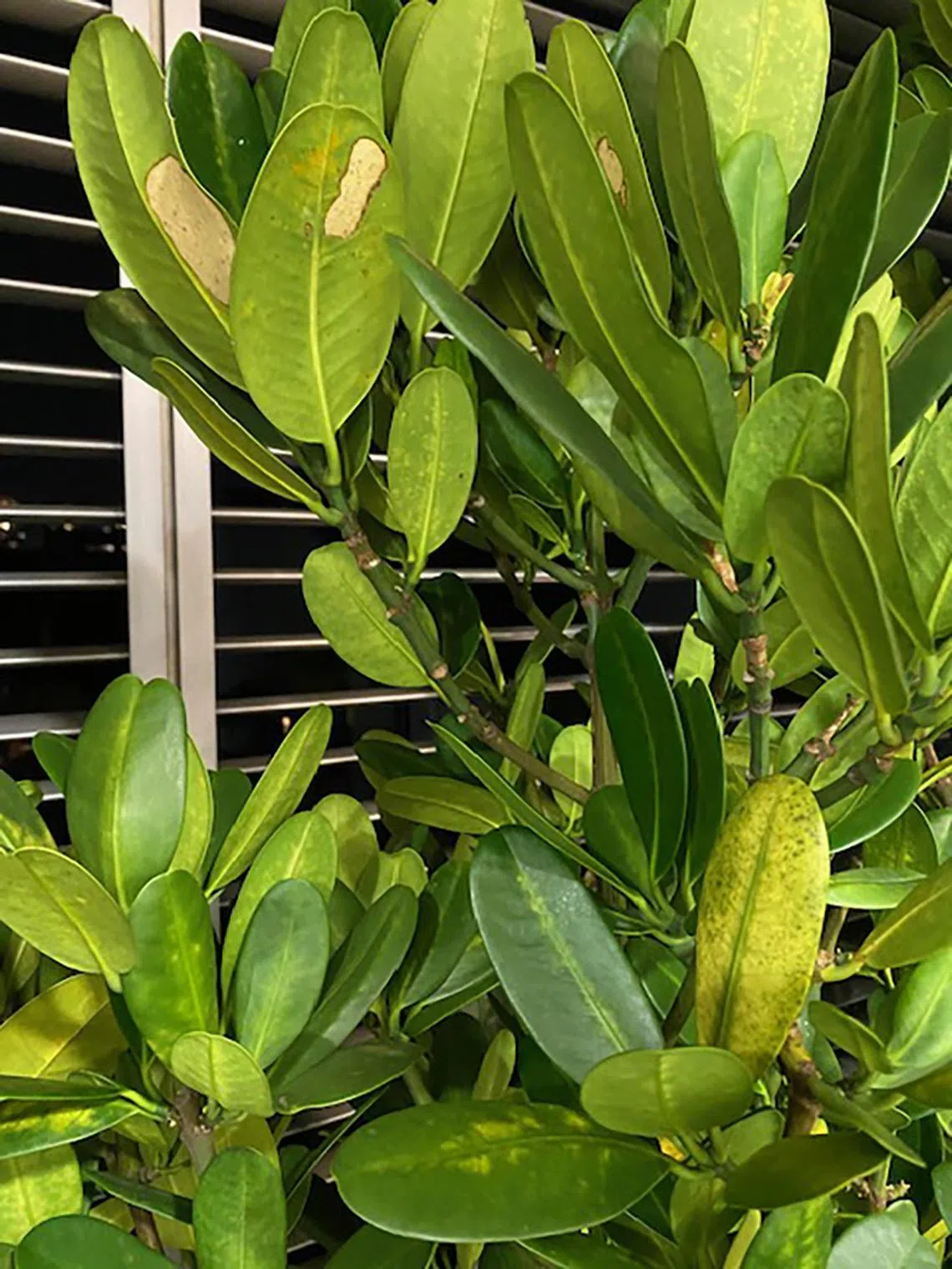
Make sure the Happiness Tree is in well-draining soil.
PHOTO: TAN MEI LIN
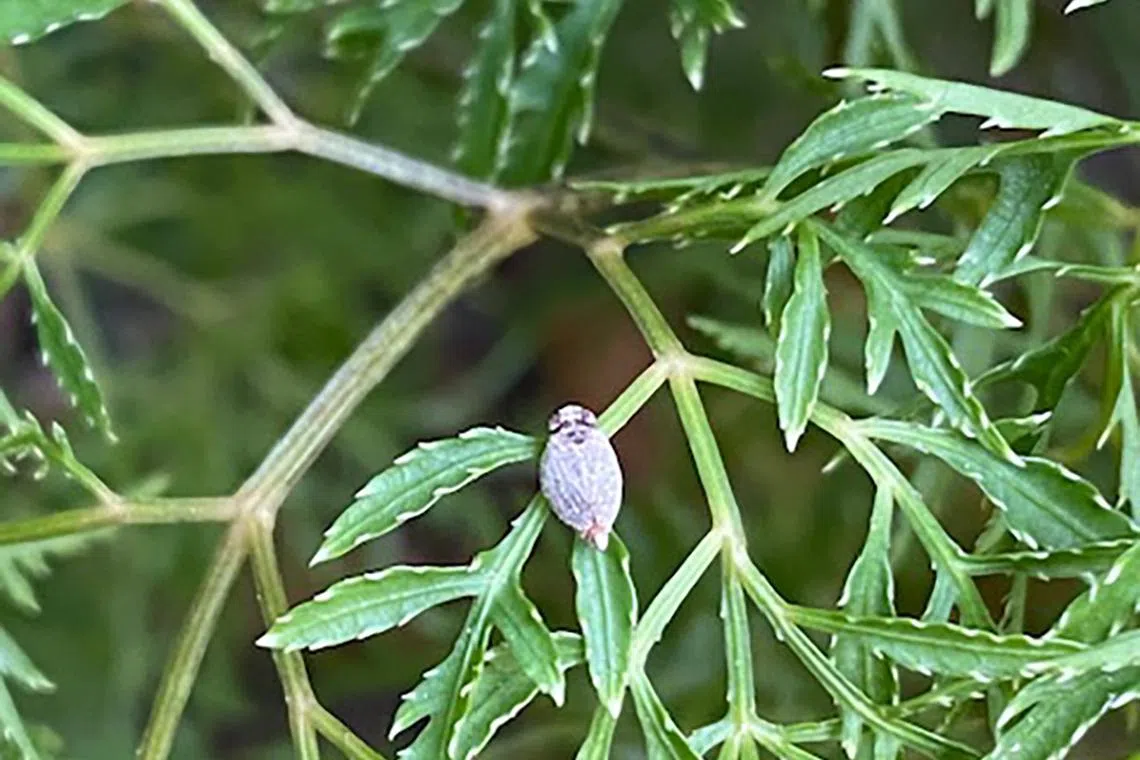
Examine your plant closely for any damage before applying pest control.
PHOTO: TAN MEI LIN
Answers by Dr Wilson Wong, an NParks-certified practising horticulturist and parks manager. He is the founder of Green Culture Singapore and an adjunct assistant professor (Food Science & Technology) at the National University of Singapore.
Have a gardening query? E-mail it with clear, high-resolution pictures of at least 1MB, if any, and your full name to . We reserve the right to edit and reject questions.

